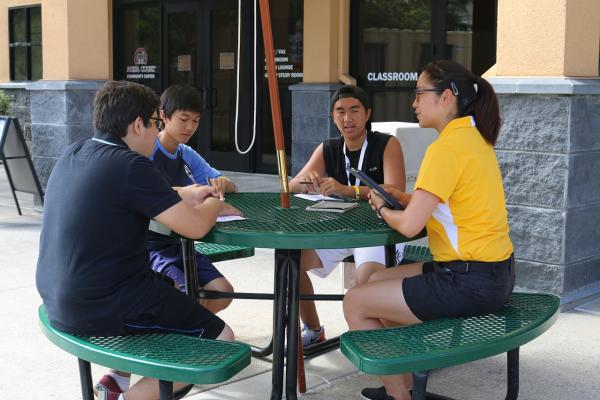

Learning resource
Cooperating with others: together we can go further
- Organise students to work in a team and assume different roles in order to achieve a common goal.
- Provide tips on how to organise team work so that each student feels confident doing what he or she can do best. Students helping each other.
- Evaluate team work by means of an assessment.
- Make students and teachers understand the benefits of team work directed towrads a common goal versus individual work.
- Allow students to experience positive, enriching experiences while working in a team.
- Become aware of the benefits of group work.
Cooperation between students, and the opportunity of getting to know each other better by working together, is a key element in the prevention of hate and radicalisations. By knowing others better, one is less likely to hate them because they are different.
The teacher can first let the students watch a team-building excersise by Tom Wujec, Build a tower, build a team.
The activity is about which team builds the highest tower in the period of 20 minutes.
Students are distributed in groups of 5. The following material is provided for each group:
- 20 spaghetti
- 1 metre of tape
- 1 metre of thin rope
- 1 marshmallow
Each group has one large empty desk.
Each group must distribute the tasks among the team members and organise their own work.
After the students have completed their towers, the teacher makes sure that:
- all the towers stand vertically by themselves,
- all the towers have the marshmallow on the top, and
- the teacher also announces which tower is the highest (using a measuring tape).
It will also be important to check whether the groups were successful regarding the following:
- planning the steps before starting,
- being effective,
- using the materials in the best possible way, and
- being innovative.
The teacher then writes down on the blackboard the heights of all the towers. If there are two towers with the same height, the team using the most materials wins. During the process of building the towers the teacher should make clear to the students how much time they have left. When time is up, the teacher has to make sure that nobody is supporting their towers with their hands, i.e. that the towers stand by themselves.
Sources:
- TedTalk by Tom Wujec (2010): Build a tower, build a team
- http://justificaturespuesta.com/3-maneras-de-organizar-grupos-cooperativos-en-el-aula/
- Pere Pujolàs. Aprender juntos alumnos diferentes. Los equipos de aprendizaje cooeprativo en el aula. 2004, Editorial Octaedro.
- Teachers / trainers (1-3).
- One large working desk for each team (5-6 students).
- For each team: 20 spaghetti, 1 metre of tape, 1 metre of thin rope, 1 marshmallow.
The teacher should be able to identify each student's behaviour within the group and evaluate their performance by focusing on the following aspects when observing the students:
- Being proactive / level of participation: from not taking part in the assignments at all, to getting completely involved and assuming the whole responsibility for the task.
- Individual responsibility: students complete all their work, using working materials, etc., or remain passive and not finish what they are expected to do.
- Group work: the ability to listen to what others have to say, distributing roles, providing new ideas, etc.
An assessment form for evaluation is attached.
Spanish
Portuguese, Portugal
French
Slovenian
German
Romanian
Dutch
